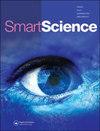麻疯树生物合成石蜡煤油燃烧器燃烧特性的实验研究
IF 1.4
Q2 MULTIDISCIPLINARY SCIENCES
引用次数: 5
摘要
燃气轮机排放对环境的影响是非常重要和关键的。一般来说,氮氧化物、总未燃烧的碳氢化合物、一氧化碳、二氧化碳和烟尘颗粒是燃气轮机燃烧系统中最重要的排放物。为了减少这些排放,生物燃料越来越多地被用于燃气轮机燃烧。由于航空占人为排放的5%以上,而且由于全球各国政府要求减排的压力越来越大,因此研究减少航空排放的途径非常重要。因此,我们建议使用基于麻风树的生物衍生合成石蜡煤油(SPK)与航空涡轮燃料(ATF)-Jet A1混合,并在实验室规模的燃气轮机燃烧室中实验研究所提出的燃料混合物的排放特性。在两种不同的操作条件下进行了调查:操作条件1 (OC1)和操作条件2 (OC2)。分析了BF-II和BF-IV两种生物燃料混合物对排放特性的影响,并与纯ATF-Jet A1进行了比较。与使用OC1的ATF相比,使用BF-II燃料可以显著减少33.5%的THC、20%的CO、42%的烟尘排放,增加40%的nox和28.7%的CO2排放。然而,在OC2下,与ATF相比,这些减排较少,nox排放量增加了50.2%。此外,燃料BF-IV与ATF相比,在OC1时THC排放量减少57.2%,CO排放量减少33.3%,烟尘排放量减少67.1%,nox排放量增加49.4%,CO2排放量增加43.9%。此外,在OC2下,随着BF-IV燃料nox排放量的增加,THC、CO、烟灰和CO2排放量也大大减少。图形抽象本文章由计算机程序翻译,如有差异,请以英文原文为准。
Experimental Investigation of Emission Characteristics on Can-Combustor Using Jatropha Based Bio-derived Synthetic Paraffinic Kerosene
ABSTRACT Emissions emanating from gas turbine are important and critical in terms of environmental impact. In general, oxides of nitrogen, total unburned hydrocarbon, carbon monoxide, carbon dioxide, and soot particles are the most significant emissions from gas-turbine combustion systems. In order to reduce these emissions, fuels derived from bio-origin are being increasingly used for gas-turbine combustion. Since aviation accounts for more than 5% of anthropogenic emissions, and also due to increasing pressure from governments across the globe for emission reduction, it is important to investigate pathways to reduce aviation-generated emissions. We, therefore, propose the use of Jatropha-based bio-derived synthetic paraffinic kerosene (SPK) blended with aviation turbine fuel (ATF)-Jet A1, and experimentally investigate the emission characteristics within a laboratory-scale gas-turbine combustor from proposed fuel blends. The investigation is done for two different operating conditions: operating condition 1 (OC1) and operating condition 2 (OC2). The influence of emission characteristics of the two biofuel blends, namely BF-II and BF-IV, are analyzed and compared with that of neat ATF-Jet A1. A substantial reduction of 33.5% in THC, 20% in CO, 42% in soot and increase of 40% in NO x and 28.7% in CO2 emissions are evident for BF-II fuel in comparison to ATF with OC1. However, at OC2, these emission reductions are less with increased NO x emissions of 50.2% in comparison to that of ATF. In addition, for the fuel BF-IV, there have been reductions of 57.2% THC, 33.3% CO, 67.1% soot and increase of 49.4% NO x and 43.9% CO2 emissions as compared with ATF at OC1. Also THC, CO, soot, and CO2 emissions are reduced considerably with increased NO x emissions for BF-IV fuel at OC2. Graphical Abstract
求助全文
通过发布文献求助,成功后即可免费获取论文全文。
去求助
来源期刊

Smart Science
Engineering-Engineering (all)
CiteScore
4.70
自引率
4.30%
发文量
21
期刊介绍:
Smart Science (ISSN 2308-0477) is an international, peer-reviewed journal that publishes significant original scientific researches, and reviews and analyses of current research and science policy. We welcome submissions of high quality papers from all fields of science and from any source. Articles of an interdisciplinary nature are particularly welcomed. Smart Science aims to be among the top multidisciplinary journals covering a broad spectrum of smart topics in the fields of materials science, chemistry, physics, engineering, medicine, and biology. Smart Science is currently focusing on the topics of Smart Manufacturing (CPS, IoT and AI) for Industry 4.0, Smart Energy and Smart Chemistry and Materials. Other specific research areas covered by the journal include, but are not limited to: 1. Smart Science in the Future 2. Smart Manufacturing: -Cyber-Physical System (CPS) -Internet of Things (IoT) and Internet of Brain (IoB) -Artificial Intelligence -Smart Computing -Smart Design/Machine -Smart Sensing -Smart Information and Networks 3. Smart Energy and Thermal/Fluidic Science 4. Smart Chemistry and Materials
 求助内容:
求助内容: 应助结果提醒方式:
应助结果提醒方式:


